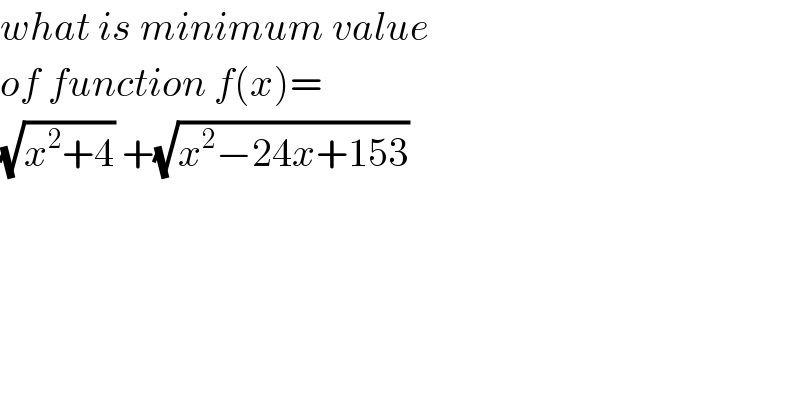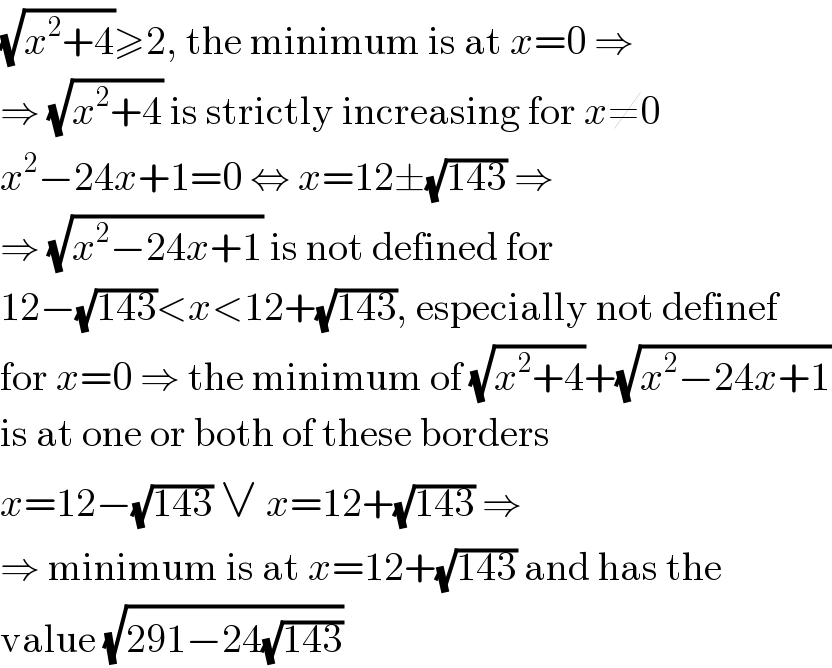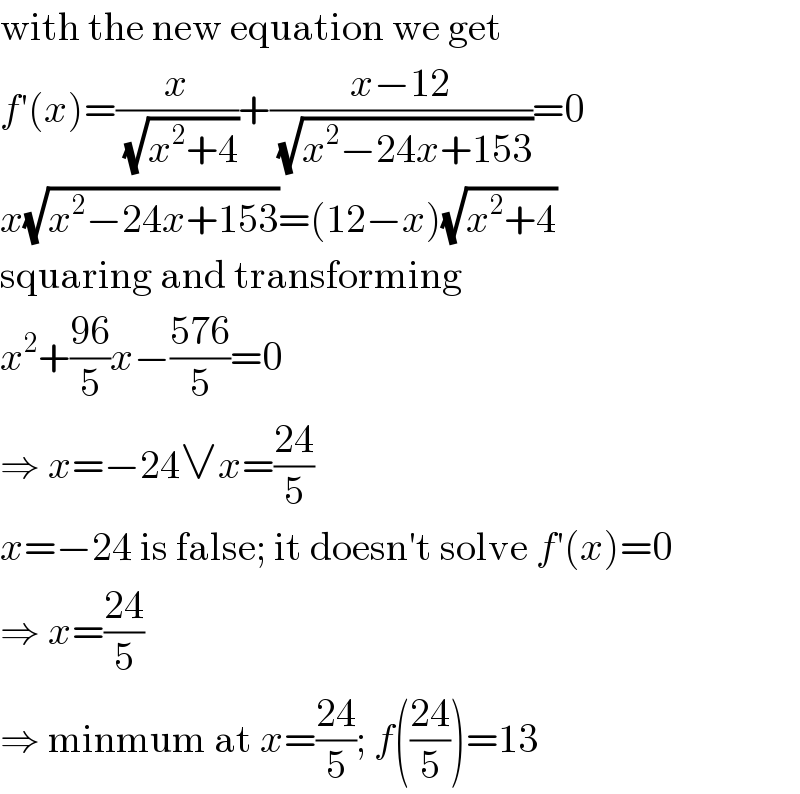
Question and Answers Forum
Question Number 77810 by jagoll last updated on 10/Jan/20

Answered by MJS last updated on 10/Jan/20

Commented by jagoll last updated on 10/Jan/20

Commented by jagoll last updated on 10/Jan/20

Commented by MJS last updated on 10/Jan/20
![because f′(x)=0 has got no real solution f′(x)=(x/(√(x^2 +4)))+((x−12)/(√(x^2 −24x+1)))=0 x(√(x^2 −24x+1))=(12−x)(√(x^2 +4)) squaring [might leads to false solutions, we must check them!] x^2 (x^2 −24x+1)=(12−x)^2 (x^2 +4) ⇒ x^2 −((32)/(49))x+((192)/(49))=0 ⇒ x=((16)/(49))±((8(√(143)))/(49))i both solve f′(x)=0 but both are not real](Q77834.png)
Commented by MJS last updated on 10/Jan/20

Answered by MJS last updated on 10/Jan/20

Commented by jagoll last updated on 10/Jan/20

